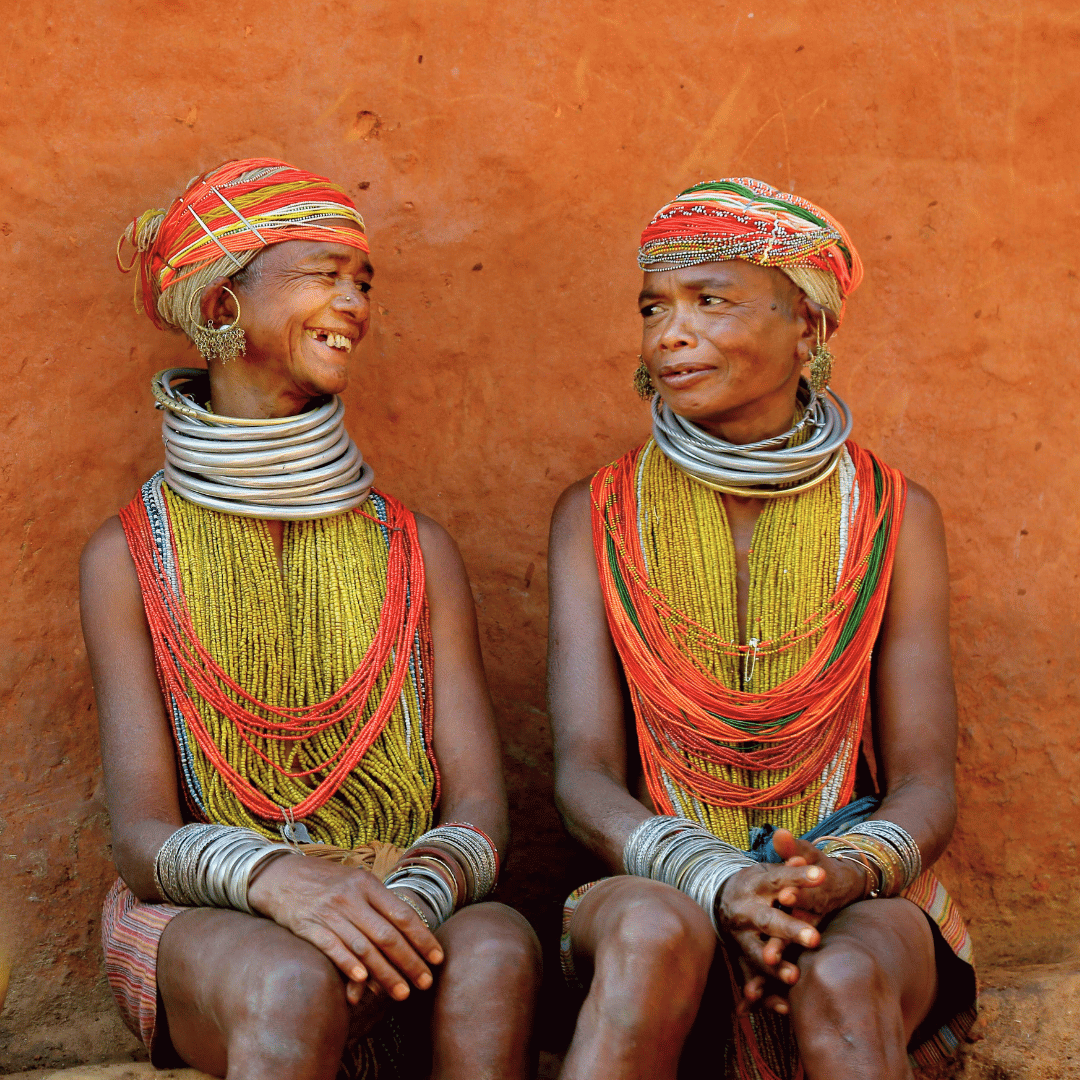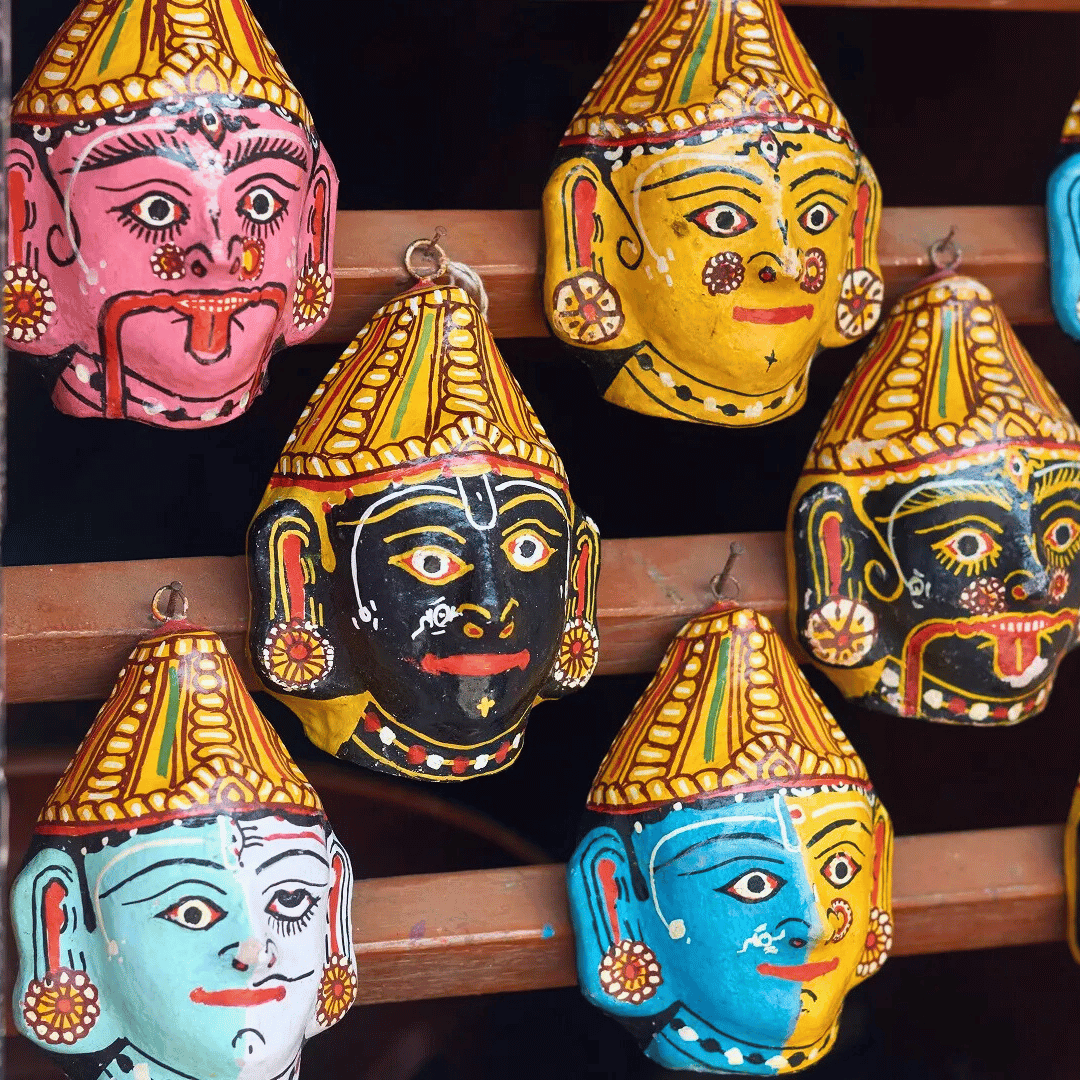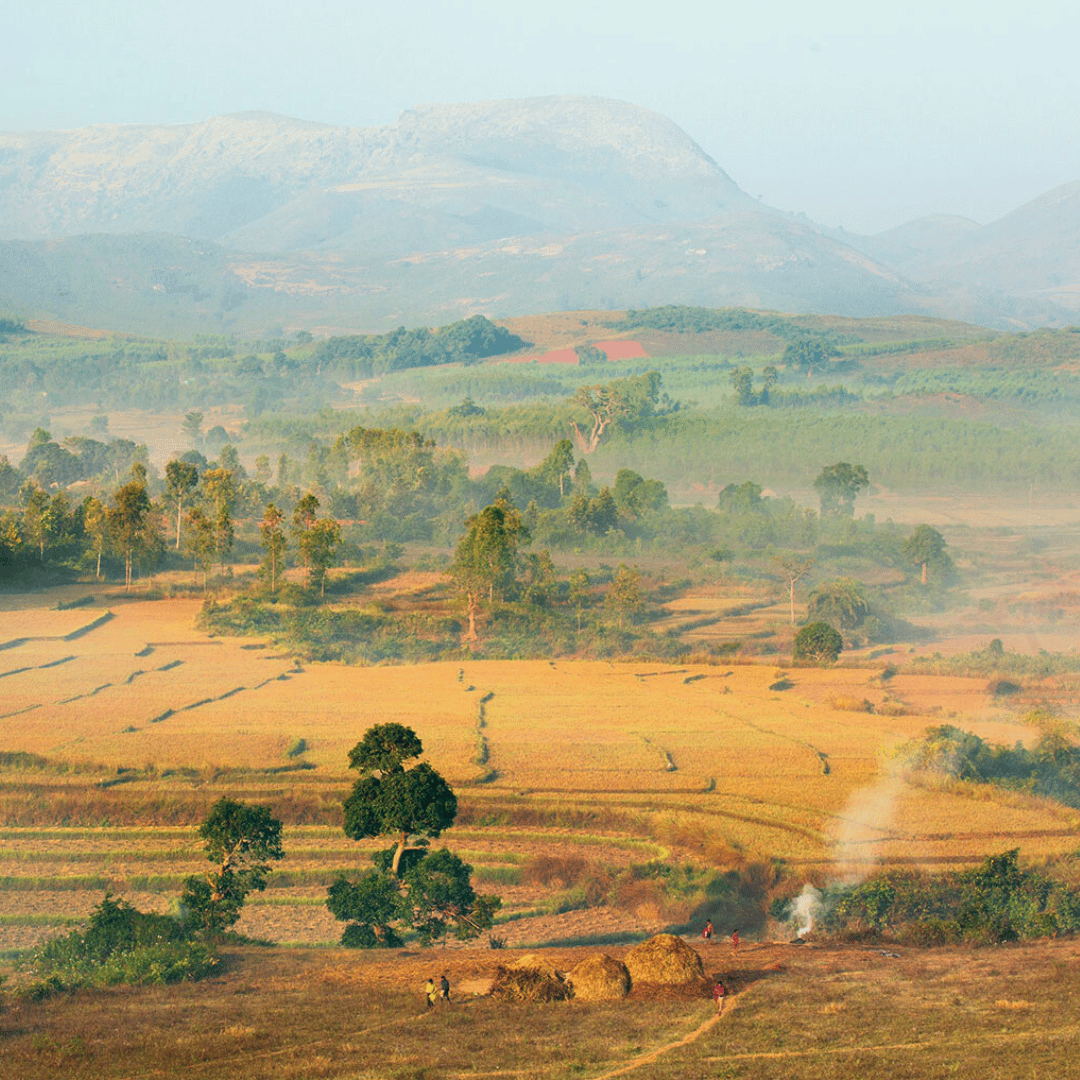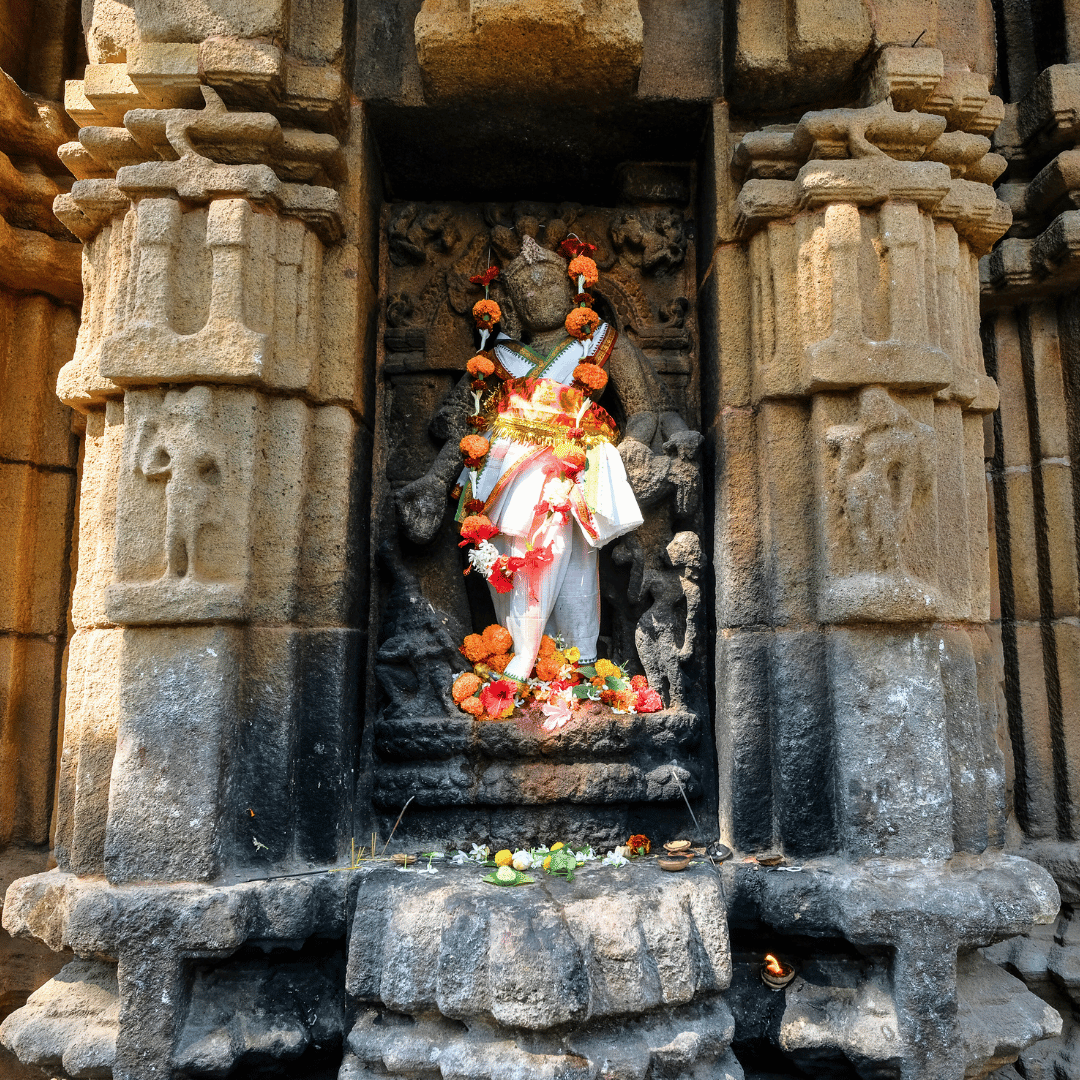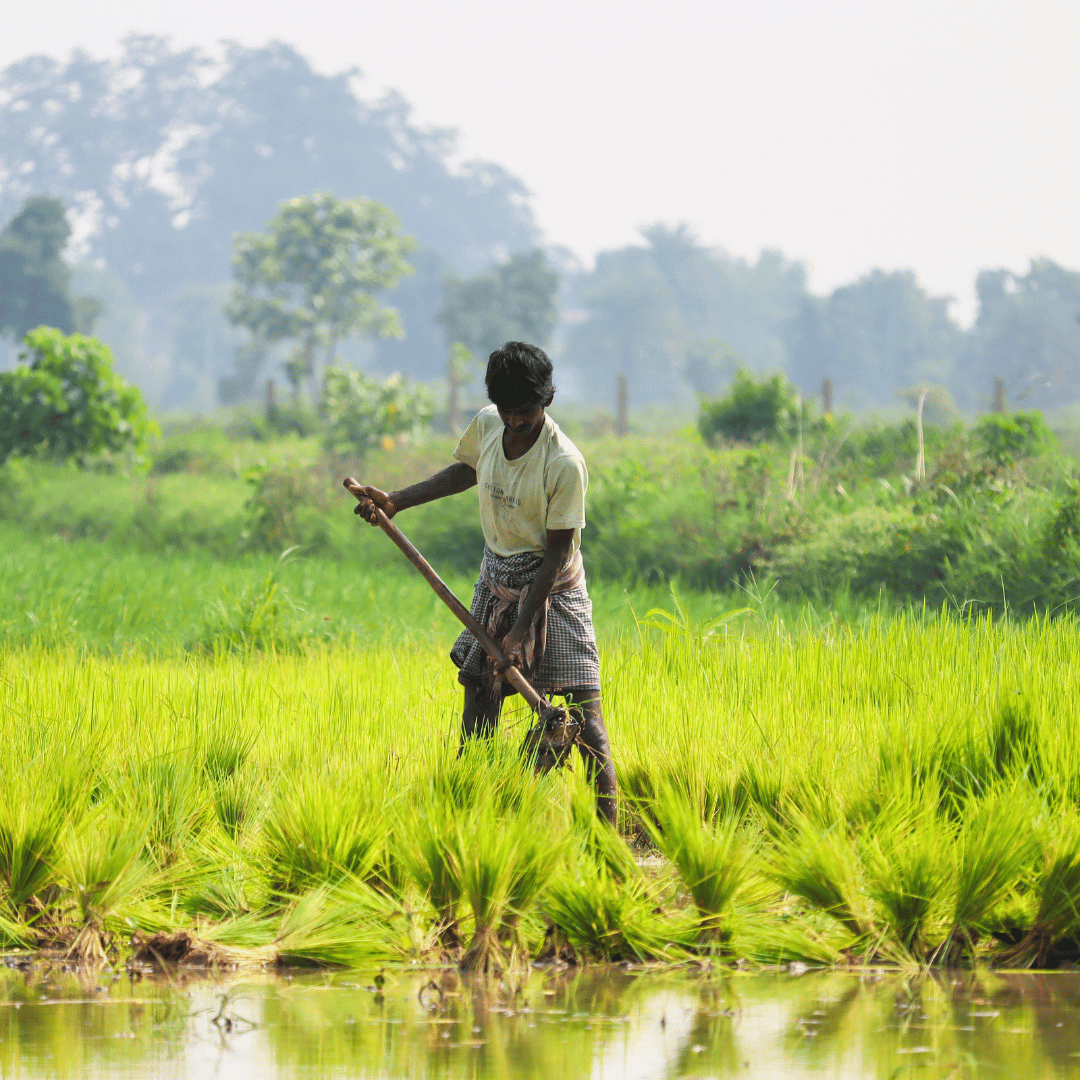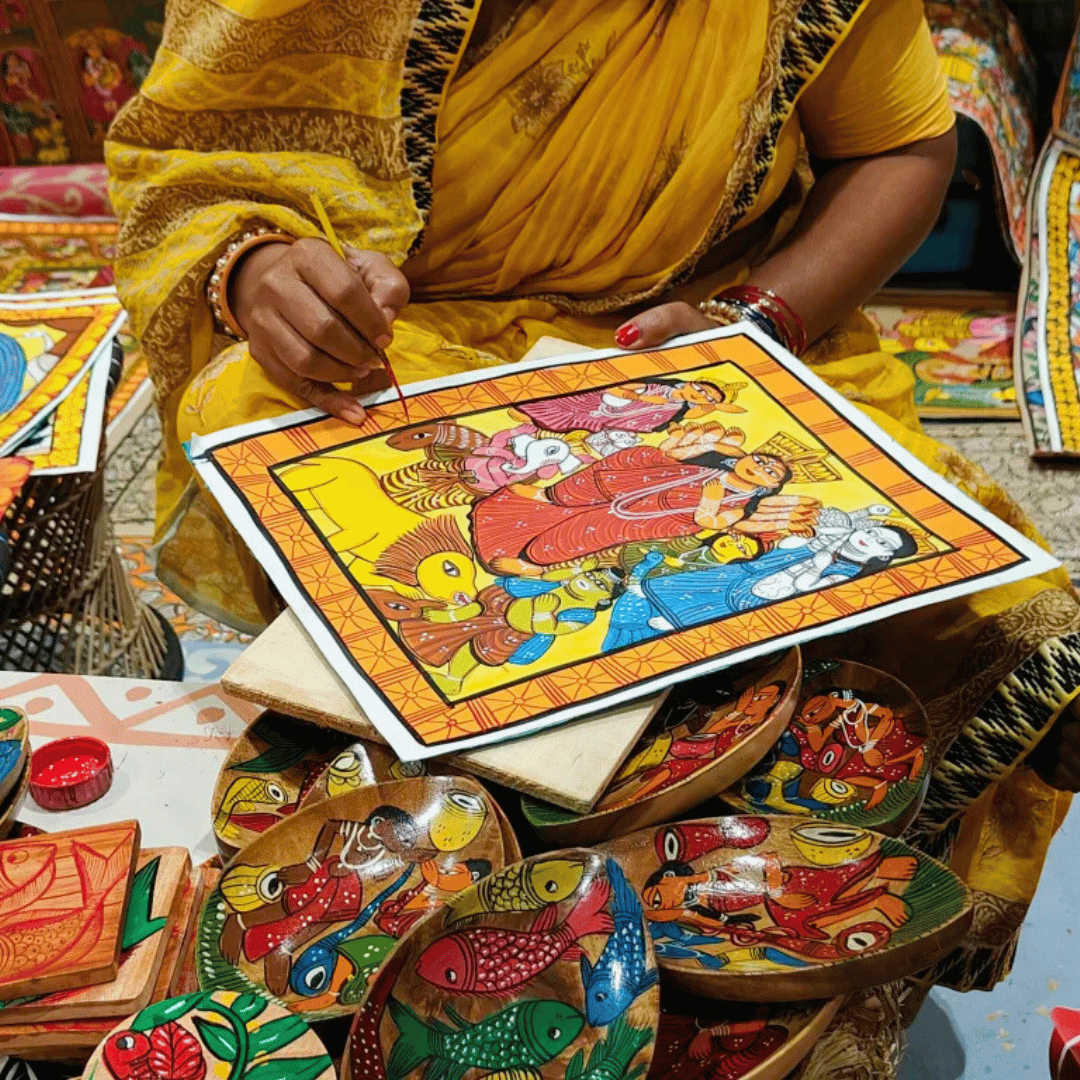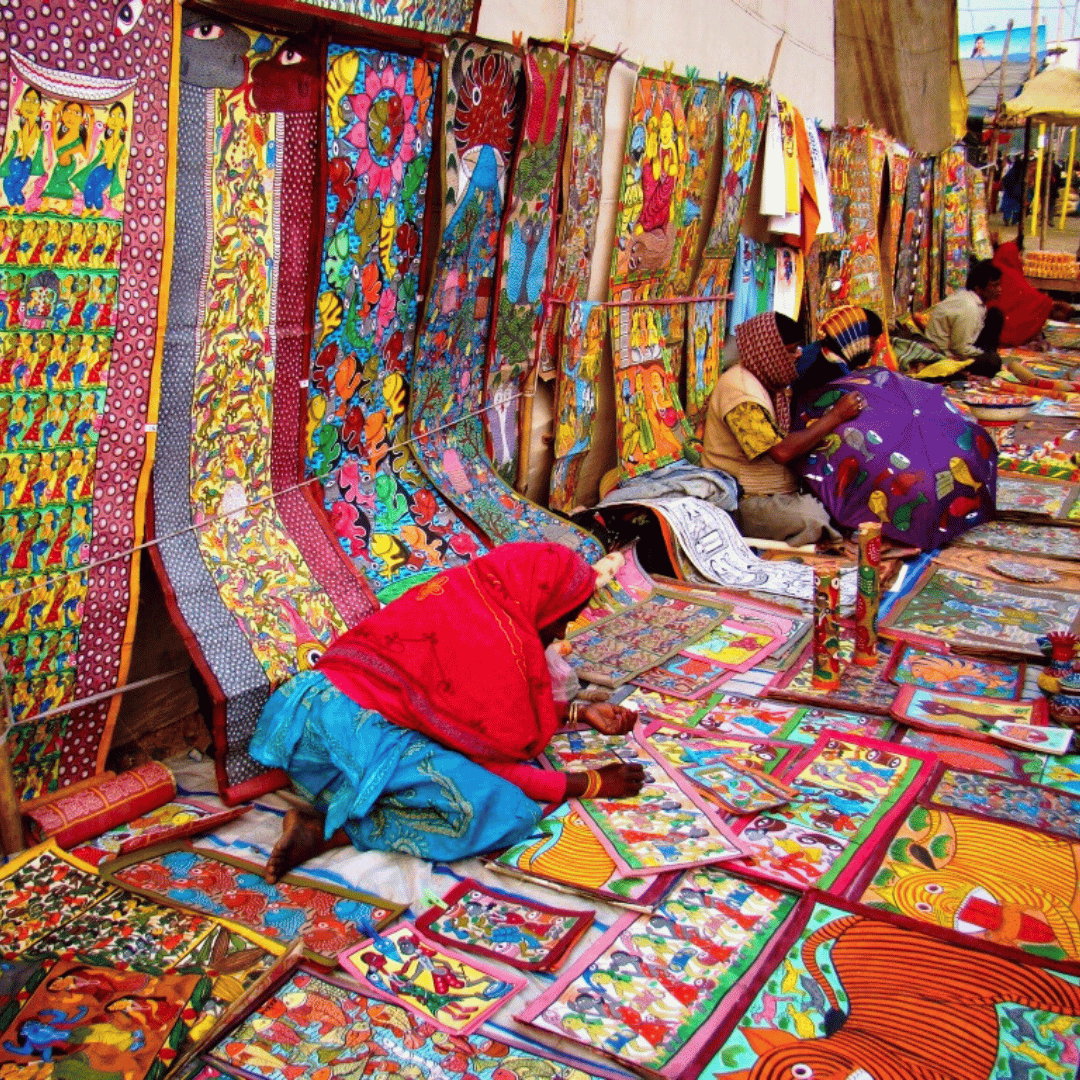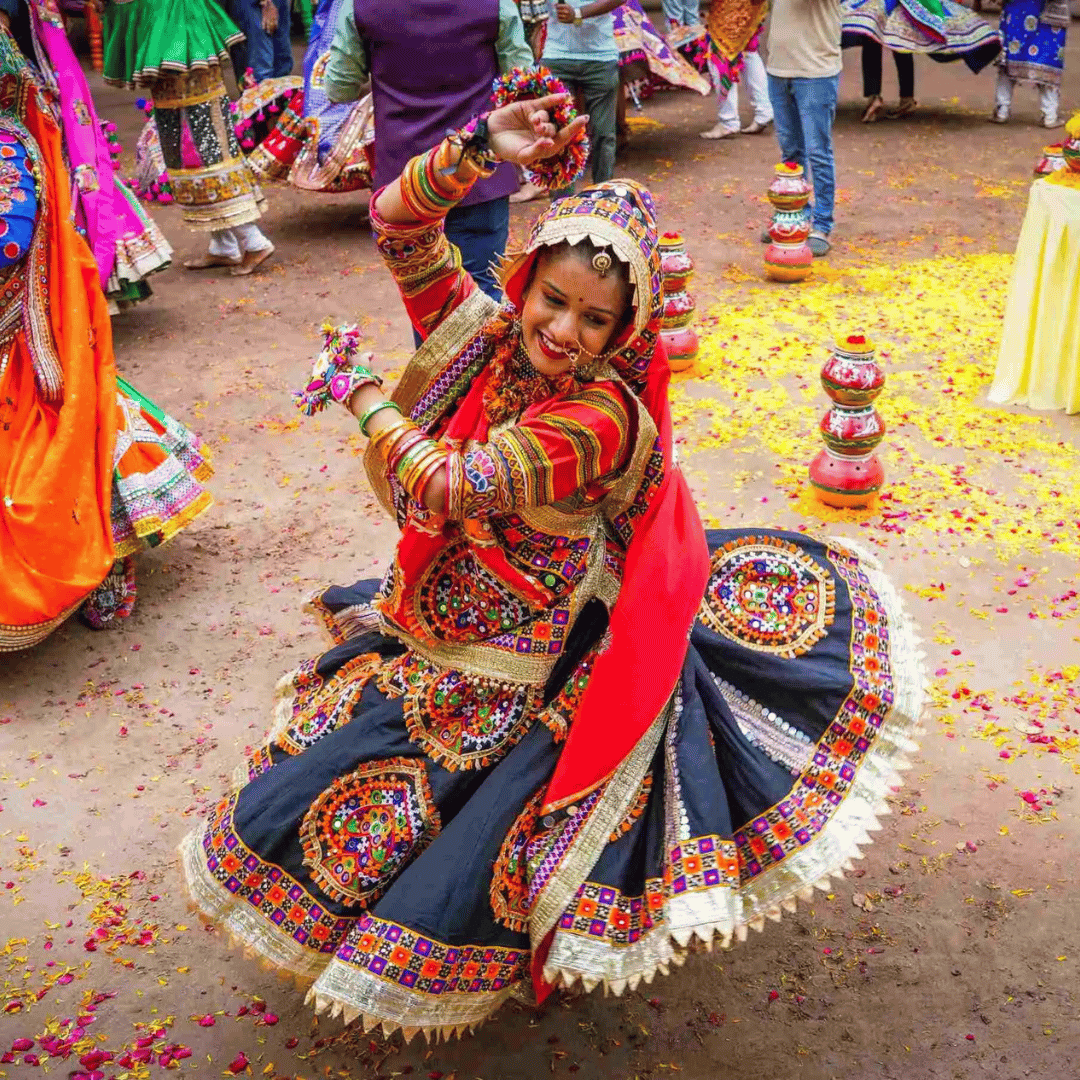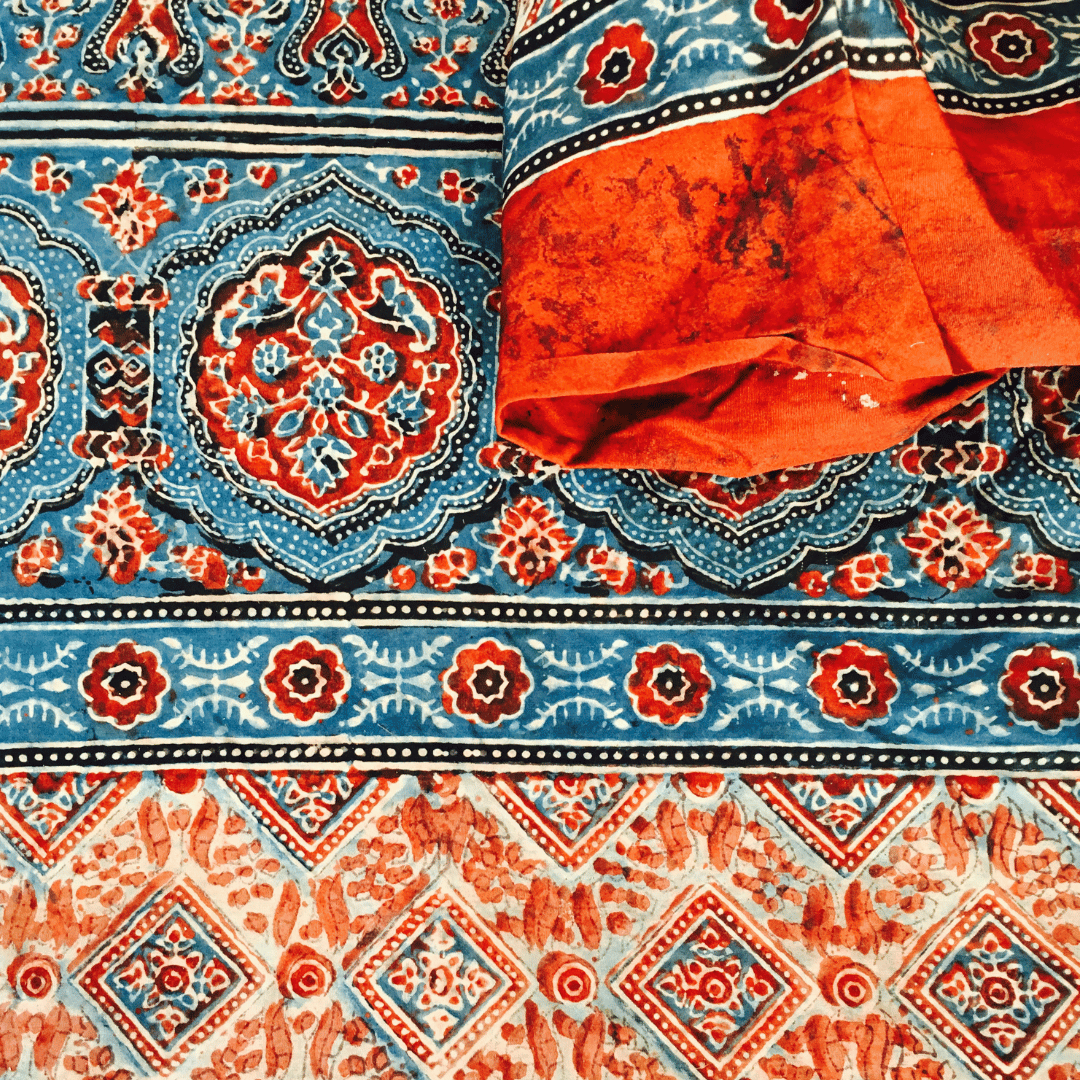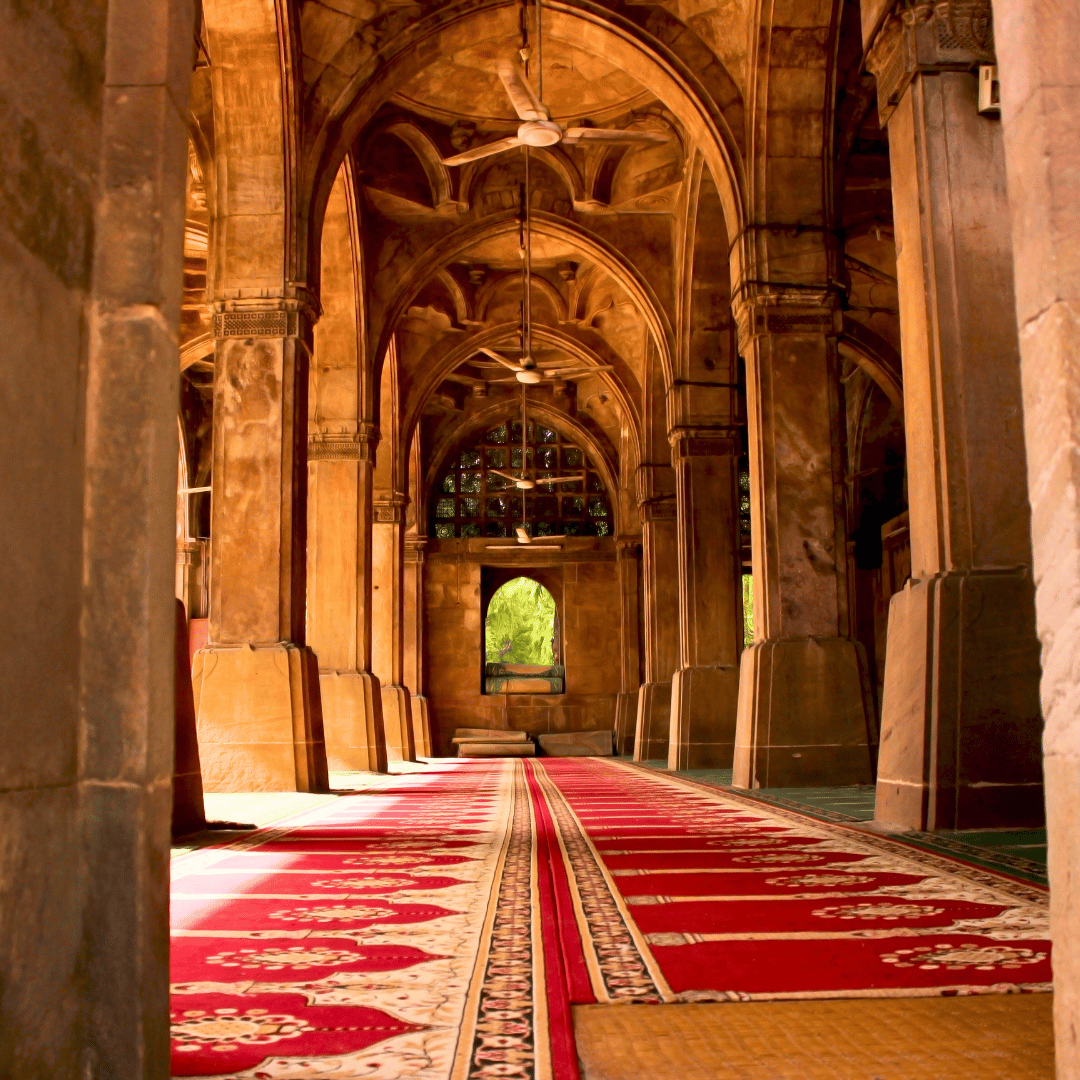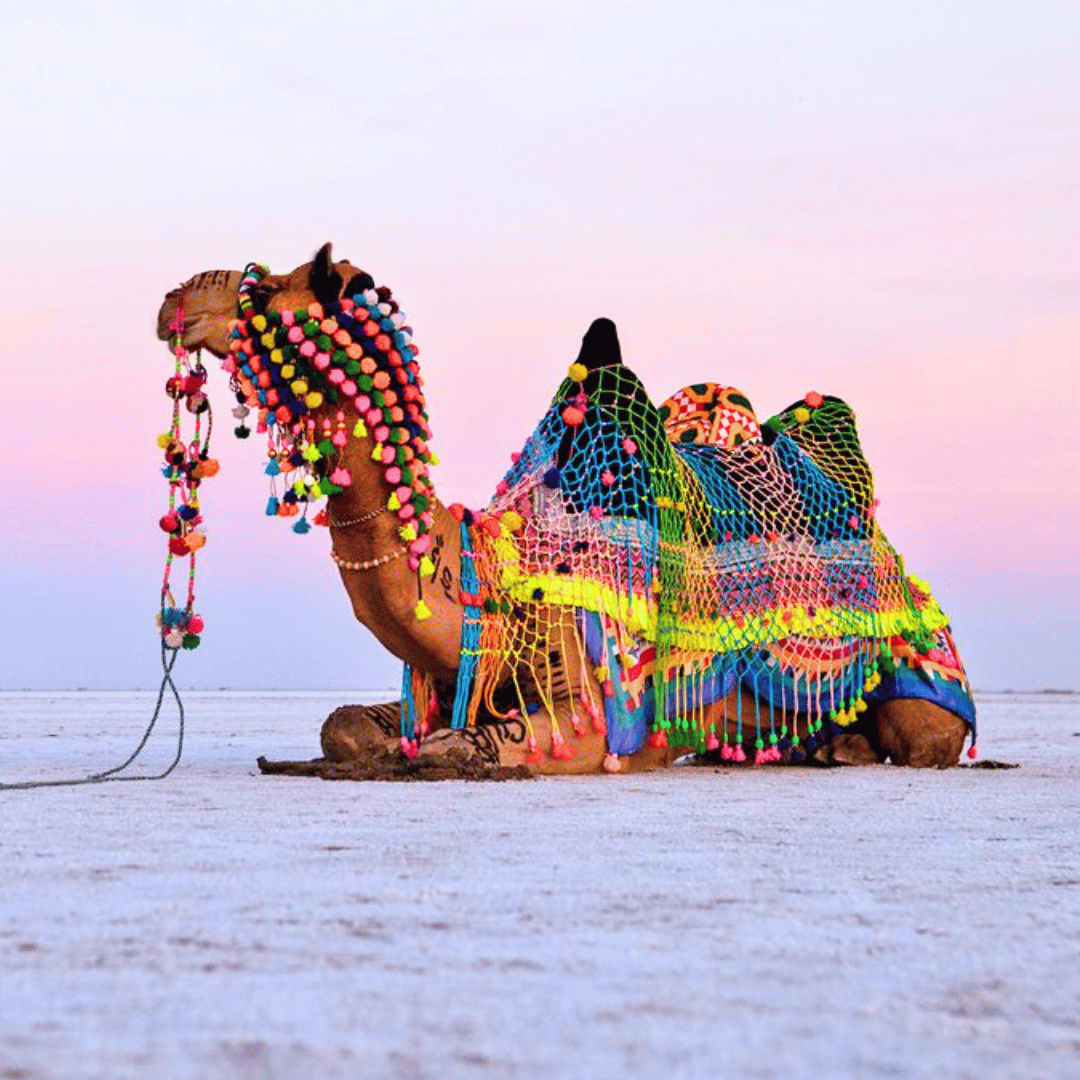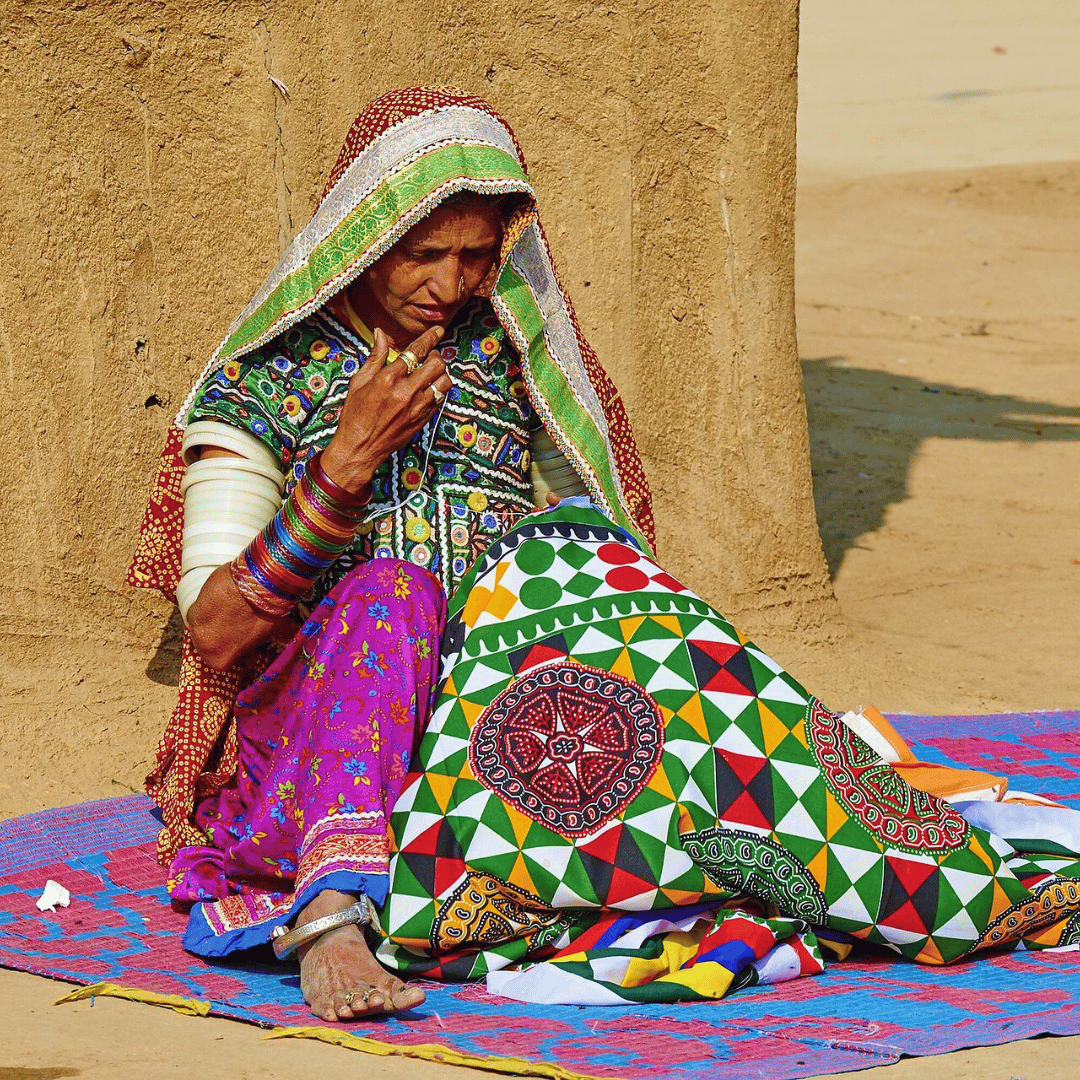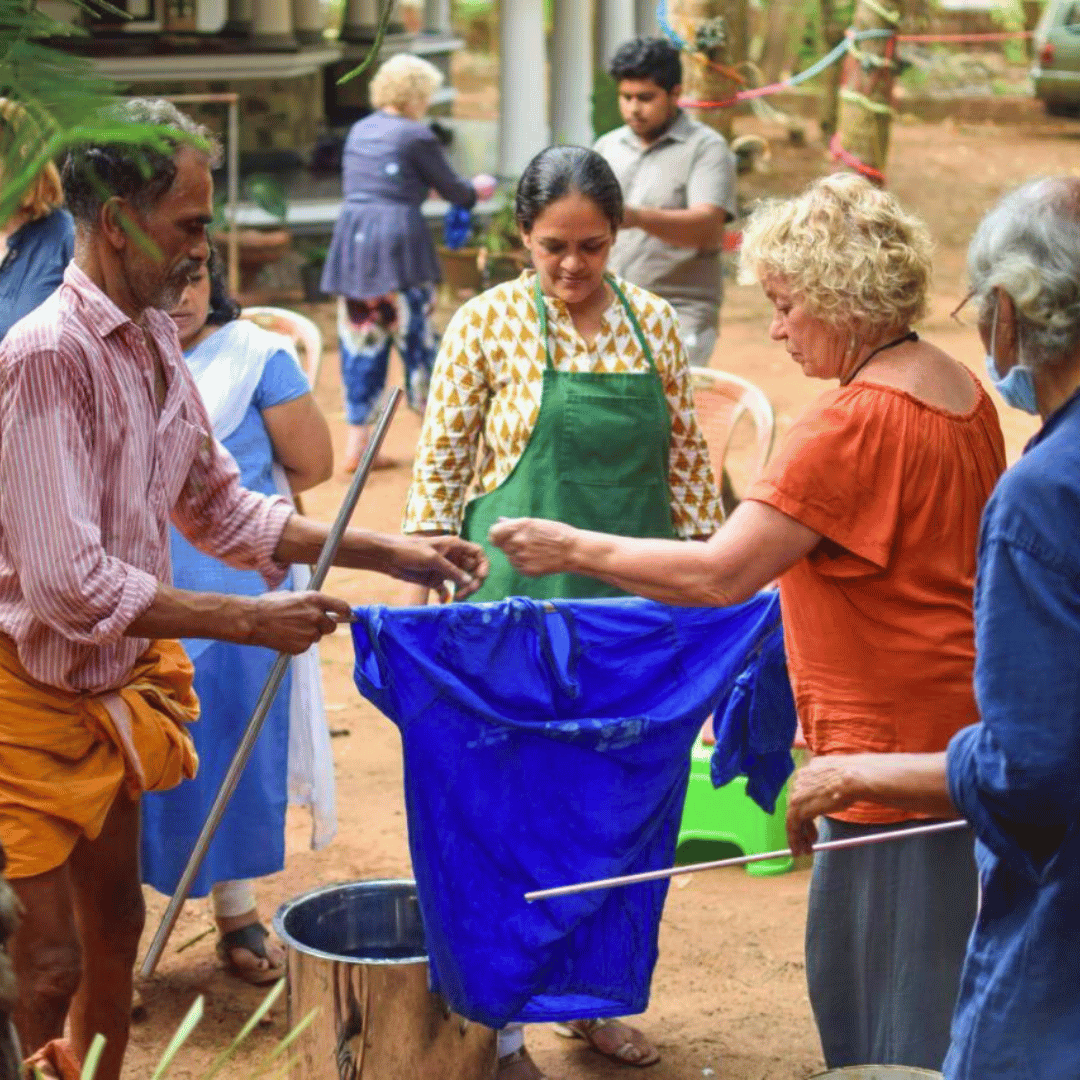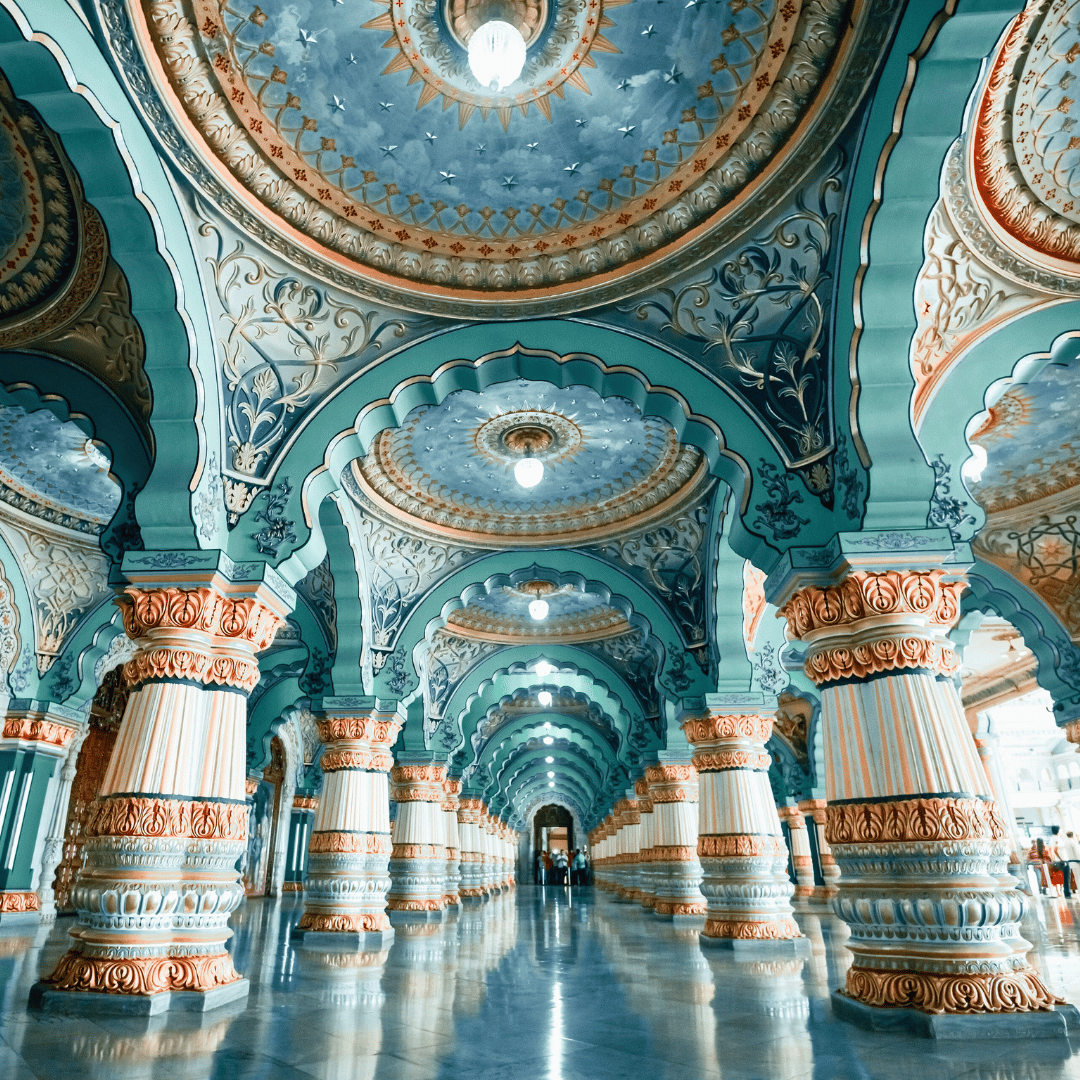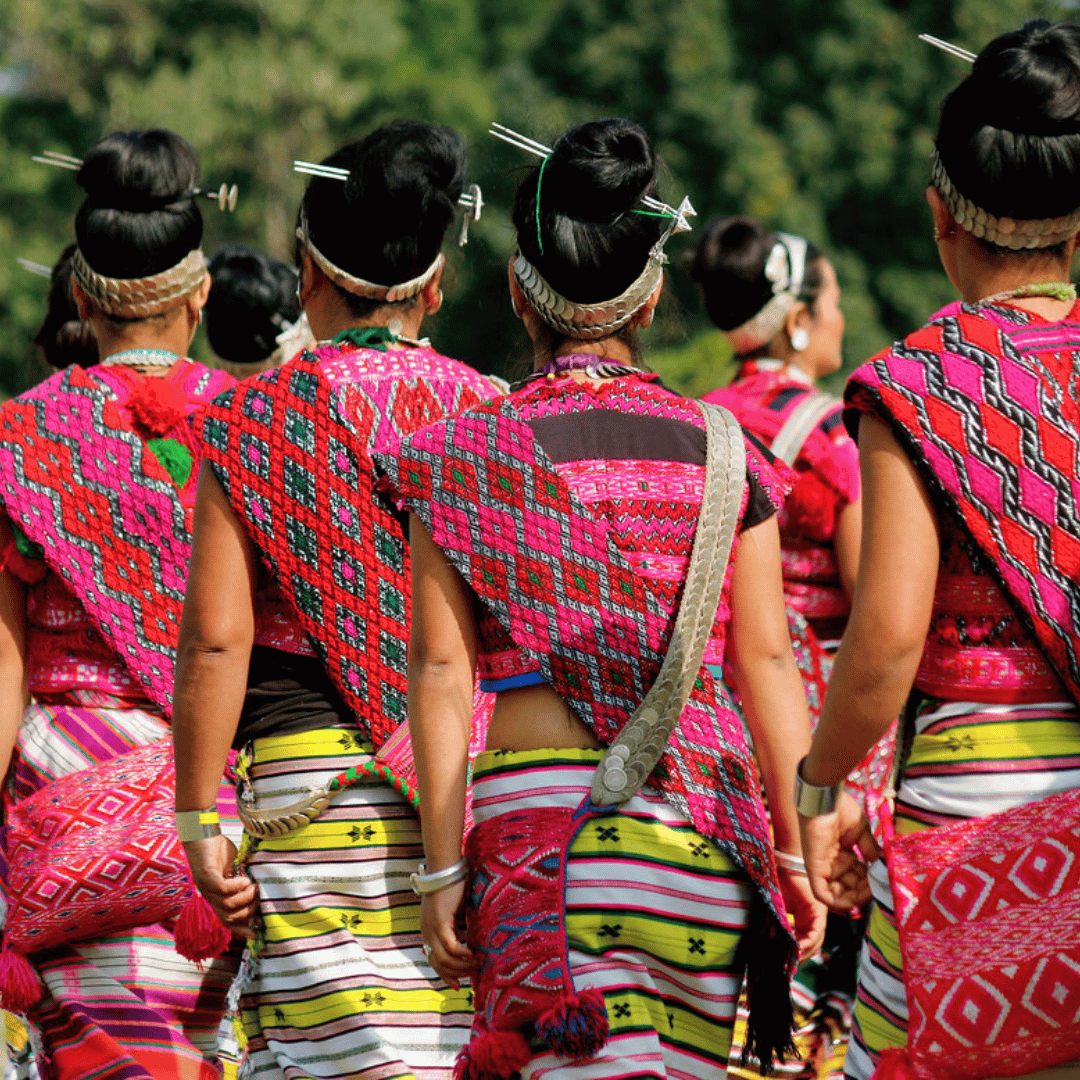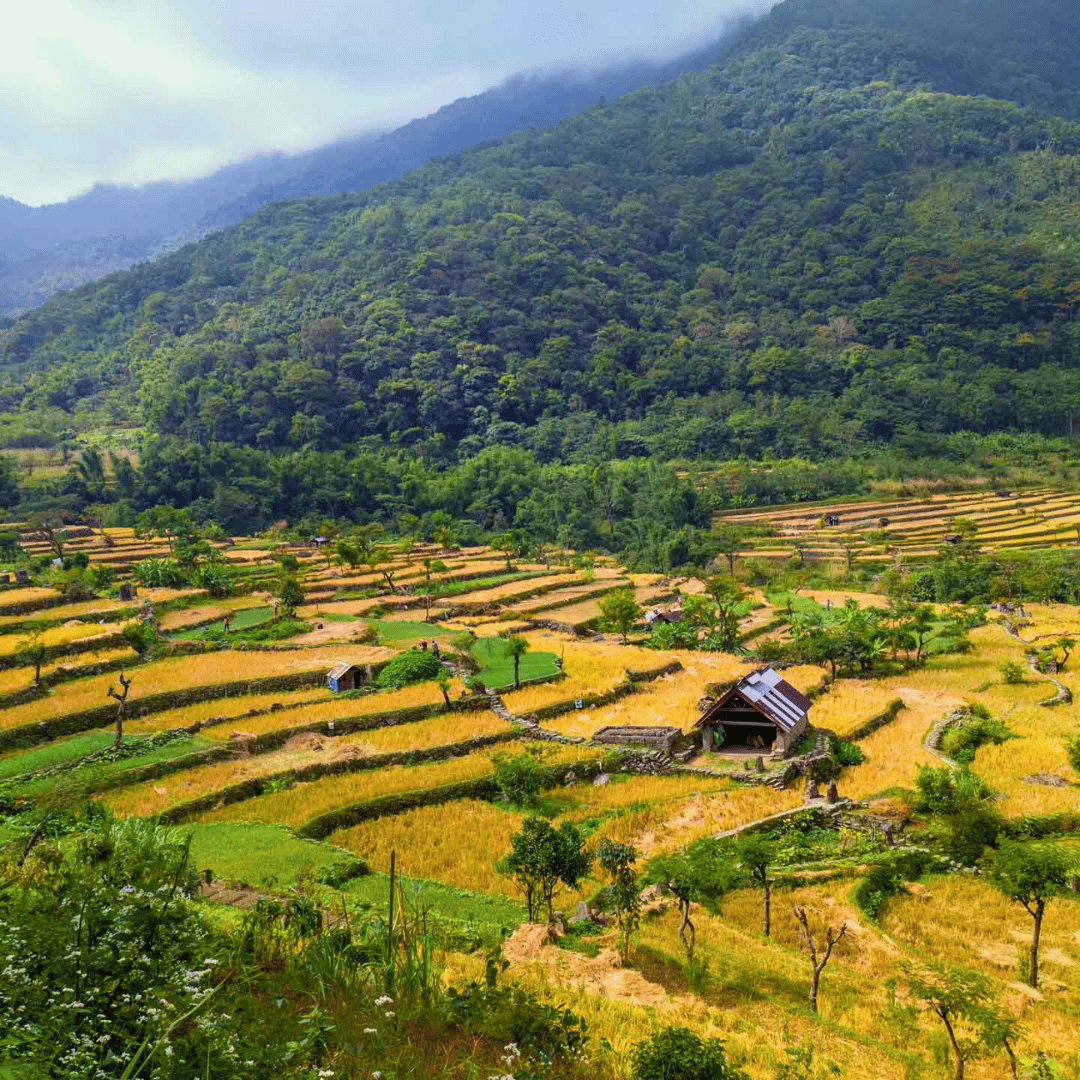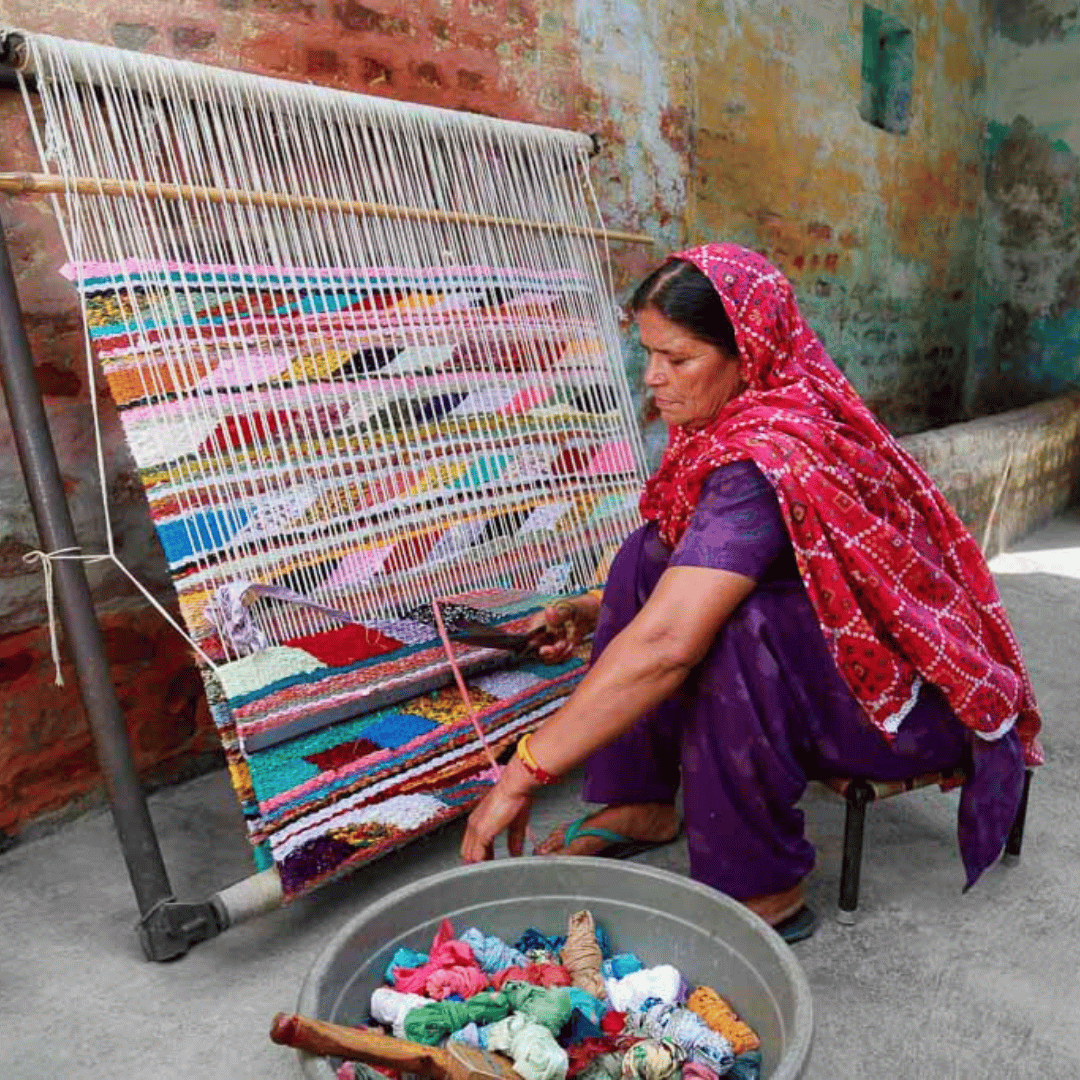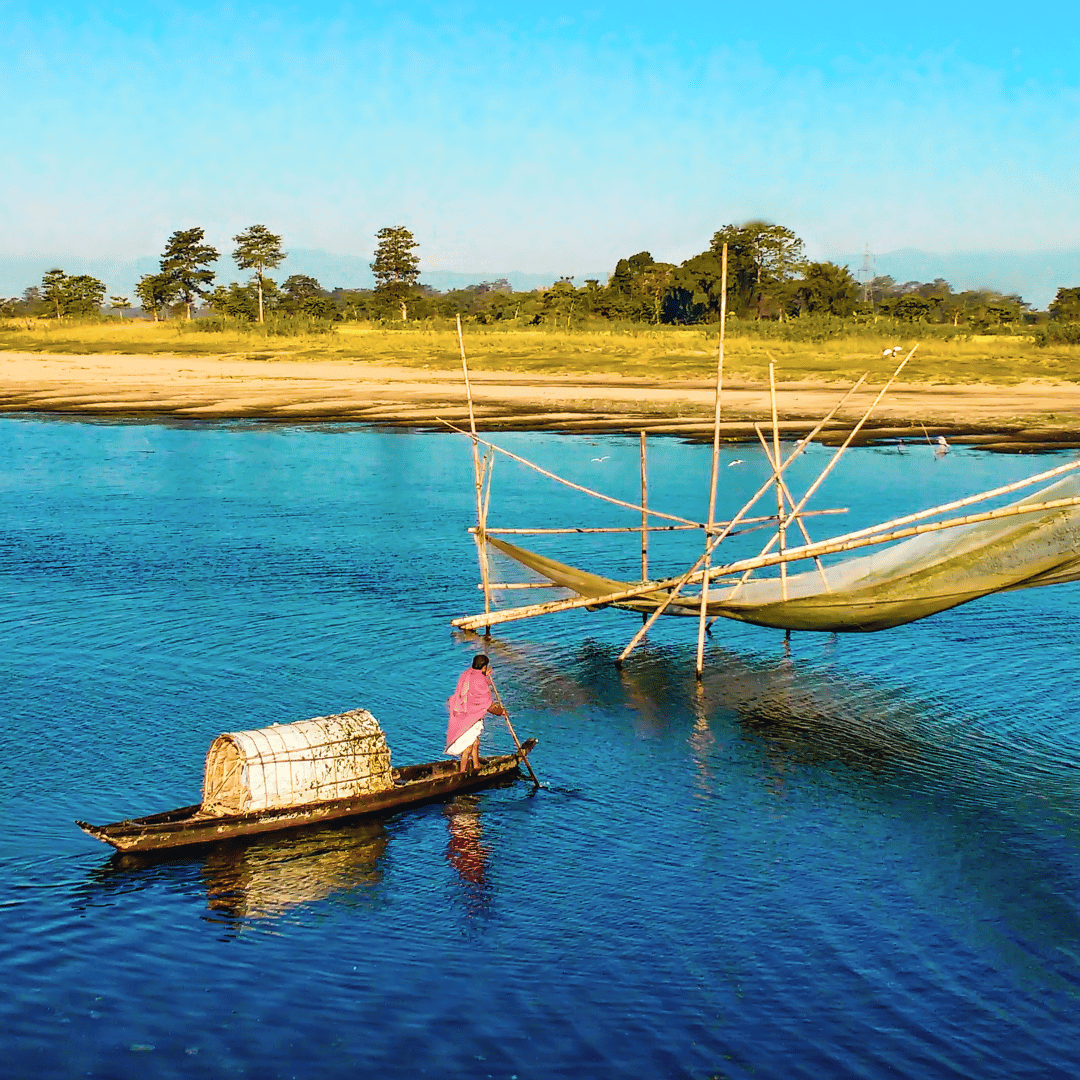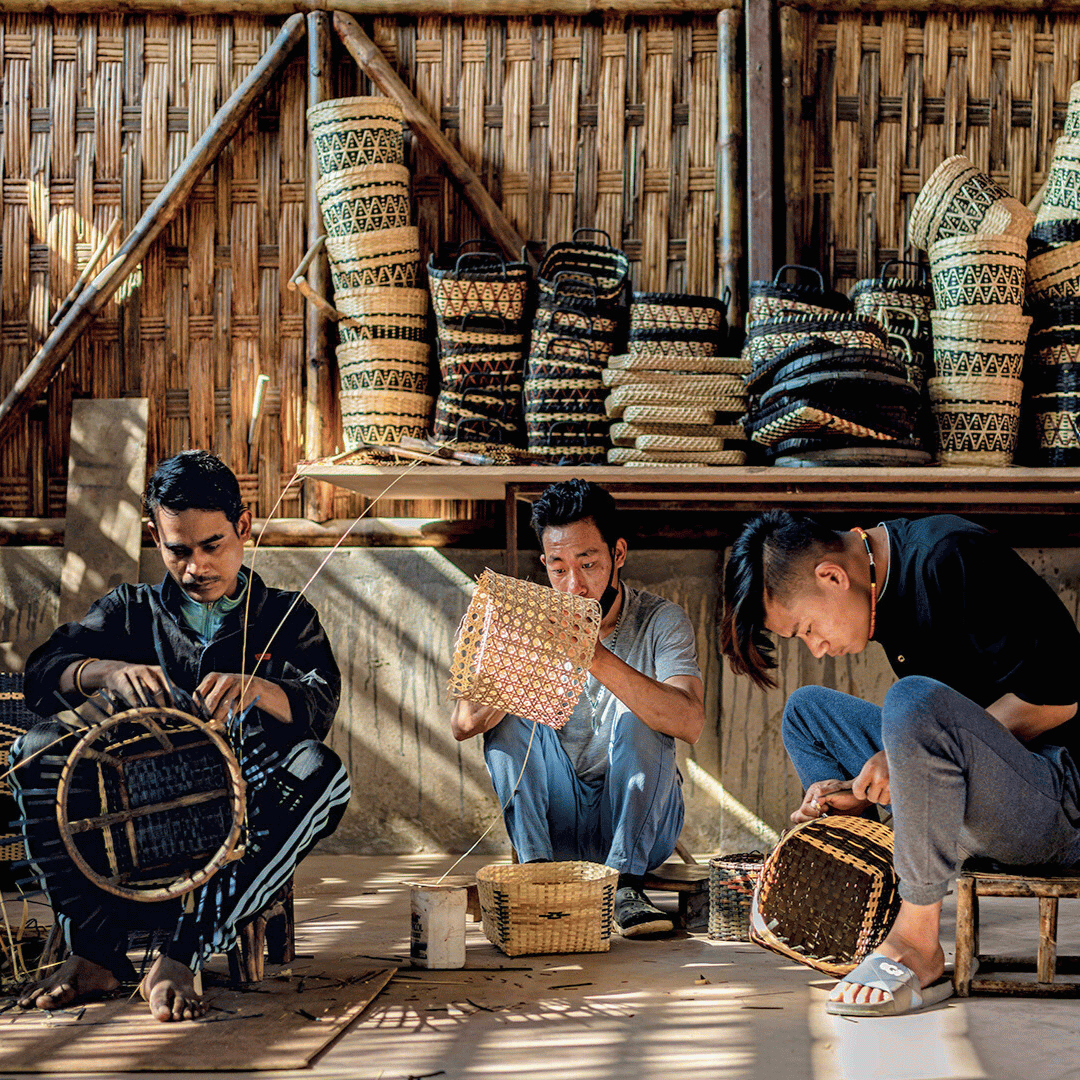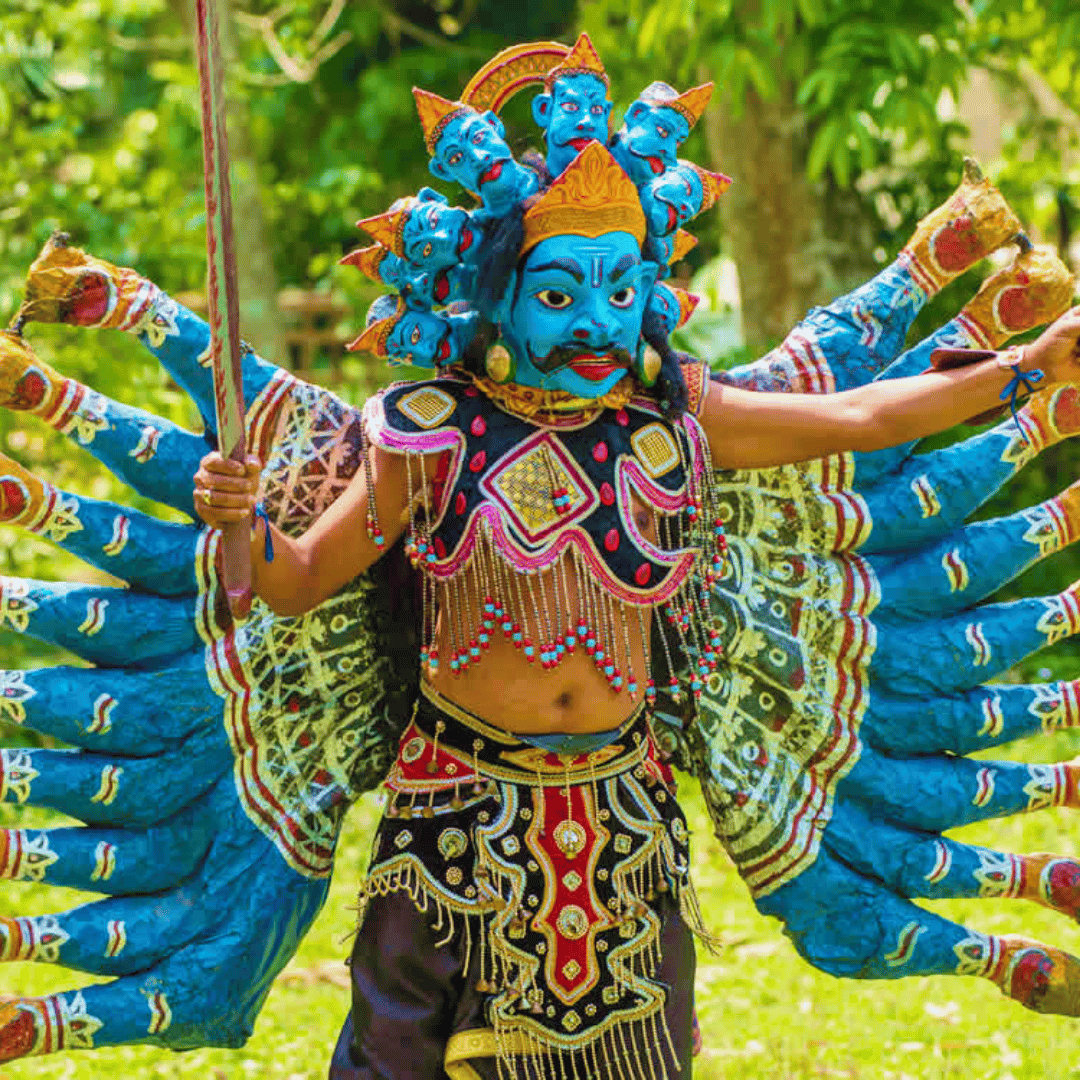Odisha Textile Tour Itinerary
-
Welcome to East India! You will be met on arrival in Bhubaneswar, the capital of Odisha, and transferred by private vehicle to your hotel in Puri. The journey takes around two hours, travelling through a mix of rural landscapes, small villages and farmland typical of this part of eastern India.
Puri, located on the shores of the Bay of Bengal, is one of the four holiest pilgrimage sites in Hinduism and is best known for the Jagannath Temple, an important centre of worship. The town is also famed for its wide beaches, coastal charm and vibrant street life, especially around the temple precinct. Puri has a strong tradition of arts and crafts, and serves as a fitting starting point for a journey focused on Odisha’s rich textile and cultural heritage. Once you arrive, check in to your hotel and enjoy the rest of the day at leisure.
-
Puri is one of the most revered pilgrimage centres for Hindus in India, and is often referred to as Jagannath, meaning ‘Lord of the Universe’, in honour of the famous Jagannath Temple that dominates the town’s spiritual and cultural life. The temple is one of the Char Dham - the four sacred sites that devout Hindus aim to visit in their lifetime - and attracts pilgrims from across the country, particularly during the annual Rath Yatra (chariot festival).
Set along the coast of the Bay of Bengal, Puri has long held spiritual significance. The Skanda Purana, an ancient Hindu text, describes it as the resting place of Lord Vishnu. But beyond its religious importance, Puri is also a vibrant hub of art, architecture and local life. The town has a rich tradition of silver filigree work, palm leaf manuscripts, and temple architecture that spans centuries, with influences dating from the 3rd century BCE through to the 17th century CE.
A memorable way to experience the old city is by cycle rickshaw, allowing you to navigate the maze of medieval lanes at a relaxed pace. Along the way, visit historic Hindu monasteries (maths), see traditional homes adorned with symbolic artwork, and stop by an ancient palm leaf manuscript library, where sacred texts and stories are still preserved on dried and inscribed palm leaves.
Though non-Hindus are not permitted inside the Jagannath Temple itself, the temple’s immense structure can be viewed from nearby rooftops and vantage points, offering a glimpse into the devotion and rituals that define daily life in Puri. The beachfront promenade also offers a chance to see local fishermen at work, visit small craft stalls, or enjoy a stroll along the sand as waves from the Bay of Bengal roll in.
-
Today you’ll visit the UNESCO World Heritage-listed Sun Temple at Konark, one of Odisha’s most iconic monuments and a masterpiece of ancient Indian architecture. Situated close to the coast of the Bay of Bengal and aligned to catch the rays of the rising sun, the 13th-century temple is a dramatic stone representation of Surya’s chariot - the Sun God in Hindu mythology.
The temple was commissioned by King Narasimhadeva I of the Eastern Ganga dynasty and built from dark stone, earning it the nickname the ‘Black Pagoda’. The chariot is depicted with 12 intricately carved wheels, each approximately 3 metres in diameter, representing the months of the year. The wheels also function as sundials, with their 16 spokes marking the passage of daylight hours. The seven powerful horses pulling the chariot symbolise the days of the week, reflecting the celestial movement of the sun. In addition to its astronomical and architectural significance, the temple is also a celebration of life and fertility, with detailed carvings of dancers, musicians, and sensuous figures adorning its walls.
In the afternoon, continue to the Heritage Crafts Village of Raghurajpur, located about 12 kilometres from Puri. Nestled among coconut palms and traditional homes, this village is home to around 500 Chitrakars - artists who specialise in the ancient tradition of Pattachitra painting. Raghurajpur is one of the few remaining places where entire families are engaged in a single craft, with techniques and styles passed down through generations.
Pattachitra is a traditional form of painting on treated cloth, depicting stories from Hindu epics such as the Ramayana and Mahabharata, as well as local legends and the Jagannath cult. The artists use natural dyes and pigments, created by grinding and filtering organic materials like vegetables, minerals and charcoal. The preparation of the cloth and the painting process itself are meticulous, resulting in miniature artworks that are both vivid and rich in storytelling.
This visit offers the opportunity to meet artisans in their homes and workshops, observe their techniques, and gain insight into the cultural significance of their craft. Raghurajpur is also known for other art forms including palm leaf etching, stone carving and traditional mask-making - all reflecting the artistic heritage of Odisha.
-
This morning, depart Puri and travel by road to Bhubaneswar, stopping en route to visit two important historical and cultural sites: Hirapur and Dhauli. The drive offers a chance to witness the transition from the coastal landscape to the more urban surroundings of Odisha’s capital city.
Your first stop is the village of Hirapur, home to the Chausathi Yogini Temple. This small 9th-century shrine is dedicated to 64 manifestations of the goddess Shakti and is one of only a few Yogini temples remaining in India. Uniquely circular in shape and open to the sky, the temple features intricately carved stone figures of the Yoginis placed in niches along the inner wall. The temple offers a rare glimpse into a tantric tradition that once thrived across eastern and central India.
Continue to Dhauli, a historically significant site associated with the transformation of Emperor Ashoka. It was here, following the bloody Kalinga War in the 3rd century BCE, that Ashoka embraced Buddhism and non-violence. The site preserves a series of ancient rock edicts carved into stone, in which Ashoka expresses remorse for the suffering caused by war and outlines his new commitment to dharma (moral rule). The edicts are accompanied by a carved image of an elephant, symbolising the Buddha. A peaceful stupa, built by the Japanese Buddhist Sangha, now sits atop the hill, offering a panoramic view of the surrounding countryside.
Upon arrival in Bhubaneswar, you’ll visit the Museum of Tribal Arts and Artefacts. Established in 1953, this museum provides a detailed introduction to the tribal communities of Odisha, of which there are more than 60. The exhibits offer an insight into the everyday life, customs and material culture of these groups, with displays featuring traditional clothing, jewellery, tools, musical instruments, and examples of food and agriculture. Full-scale replicas of tribal homes from different regions showcase the diversity of construction styles and living environments.
This is an informative and respectful presentation of Odisha’s tribal heritage, and an ideal prelude to the coming days of your journey, which will take you deeper into the rural and tribal regions of the state.
-
Today, enjoy a full-day excursion to Olasingh, a small weaving village located approximately an hour’s drive from Bhubaneswar. Tucked away in the countryside, Olasingh is one of the lesser-known but culturally rich textile centres of Odisha, known particularly for its handwoven cotton saris and dhotis. The village has a long-standing weaving tradition, with many families engaged in the craft across generations.
Upon arrival, set out on a walking tour of the village alongside a local guide or community leader. This is a chance to explore the rhythm of daily life in a traditional weavers’ settlement - passing clusters of simple homes, open courtyards and handlooms tucked into shaded verandahs. The tour offers an intimate look at how the local weaving community lives and works, and how this craft remains central to their identity and livelihood.
You’ll visit a handloom unit where artisans demonstrate the full process of cotton weaving - from spinning and dyeing the yarn to setting up the loom and creating patterned textiles. The cotton used here is often locally sourced, and the weavers are known for producing finely textured fabrics in subtle colour palettes. Saris and dhotis made in Olasingh are generally characterised by simple motifs and soft borders, reflecting both utility and aesthetic in everyday dress.
Throughout your visit, you’ll have the opportunity to ask questions, learn about the challenges facing traditional weavers today, and see how age-old techniques are being preserved or adapted for newer markets. For those interested, there may also be a chance to purchase textiles directly from the makers.
This visit offers a meaningful and unhurried insight into Odisha’s village textile culture, far removed from commercial hubs - a highlight for anyone with a genuine interest in the human stories behind India’s handloom traditions. Return to Bhubaneswar in the late afternoon.
-
Today, travel by road from Bhubaneswar to Dhenkanal, with stops en route at Nuapatna and Maniabandh - two villages renowned for their rich ikat weaving traditions. This region of Odisha has long been associated with handloom weaving, particularly the complex single-ikat or “weft-ikat” technique, where patterns are dyed onto the weft threads before weaving begins.
Your first stop is Nuapatna, a vibrant weaving village known for producing both silk and cotton ikat textiles. The artisans here are skilled in creating saris with striking patterns, fine textures and a characteristic sheen. You'll visit a local workshop to see how the yarns are meticulously tied and dyed, then woven into beautifully finished fabrics. The colours used in Nuapatna textiles are often bold and saturated, producing garments with a distinctive brilliance and clarity.
Just a short distance away is Maniabandh, another centre of ikat weaving with a more traditional village feel. Here, most of the weaving is done in cotton, with a smaller number of silk weavers still active. This area is home to a large number of artisan families, and you’ll have the opportunity to meet a master weaver who will demonstrate the full process - from the tying of the threads to the final weaving on the loom. Maniabandh ikats are known for their detailed motifs, symmetrical designs and deep cultural roots.
From there, continue your journey to Dhenkanal, stopping along the way at a village specialising in Dhokra - the ancient art of bell metal casting using the lost-wax method. This non-ferrous metalworking technique dates back over 4,000 years and has been practiced by tribal communities across central and eastern India. In Odisha, the village of Sadeibareni near Dhenkanal is a key centre for this craft. The pieces are typically bronze and often feature fine mesh-like detailing, giving them a distinct character and texture.
During your visit, you’ll see artisans at work, shaping wax models, coating them in clay, and casting them in molten metal - a labour-intensive process that produces entirely unique, handcrafted sculptures, jewellery and ritual items. The designs are often inspired by tribal mythology, nature, and rural life, and reflect the strong cultural heritage of the region.
Arrive in Dhenkanal in the late afternoon and check in to your accommodation. The area offers a quieter pace, surrounded by forests and rolling hills, making it a pleasant base for the next stage of your journey through Odisha.
-
Rise early this morning for a gentle jungle walk in the forested surroundings near your hotel, accompanied by a trained forest guard. These guided walks offer a chance to connect with the natural environment and observe the rich birdlife and smaller forest-dwelling animals native to this part of Odisha. The trail passes through mixed woodland, where you might spot peacocks, parakeets, langurs or even the occasional deer. Wildlife activity often centres around the area’s only waterhole, located just a short distance from the lodge, making it a good vantage point for quiet observation.
Return to your hotel mid-morning for a relaxed breakfast, with time to unwind and take in the peaceful surroundings. The forest and hills around Dhenkanal provide a welcome contrast to the busier towns visited earlier in the journey, offering a slower pace and an opportunity to experience Odisha’s natural landscape.
In the afternoon, you’ll travel to Joranda, a quiet village known for its strong spiritual traditions. Joranda is the centre of the Mahima Dharma, a monastic order that emerged in the 19th century and promotes simplicity, non-violence, and devotion. The order is distinct in its beliefs and practices, including its rejection of idol worship and emphasis on inner purity.
As sunset approaches, you’ll witness the daily evening prayer ceremony at the monastery - a deeply atmospheric experience as saffron-clad monks chant devotional hymns and offer prayers by the light of flickering lamps. The ceremony takes place in the open courtyard of the temple complex and is performed with quiet devotion, creating a reflective and peaceful mood. Visitors are welcomed respectfully, and your guide will help interpret the meaning behind the rituals.
Return to your hotel in the early evening after this insightful glimpse into one of Odisha’s lesser-known spiritual communities.
-
This morning, depart Dhenkanal for Bargarh, a journey of approximately six hours by road. The drive takes you through a landscape of open fields, forested stretches and rural villages, offering a glimpse into everyday life in western Odisha. This region is less frequented by tourists, but it plays a significant role in the state’s textile production and offers a unique insight into traditional weaving practices.
On arrival in Bargarh, you’ll visit a local silk production centre where you can observe the various stages of silk processing - from reeling the yarn to the dyeing and weaving of fine fabrics. The area is known for both silk and cotton weaving, and the production process here often involves labour-intensive, hand-done techniques that have been passed down through generations.
Later, explore one of Bargarh’s bustling local markets where you’ll encounter a diverse range of textiles, including cotton tie-dye fabrics, handwoven silks, and coarse cottons used for daily wear. The market atmosphere is vibrant and full of colour, with traders offering lengths of fabric, ready-made garments, and household items. It’s a great opportunity to interact with local weavers and merchants, and perhaps pick up a piece or two as a keepsake of your journey.
If your visit falls on a Friday, you’ll have the rare chance to experience the Balijodi Haat - a weekly weavers’ market that is a highlight for anyone with an interest in handloom culture. Unusually, the market begins after midnight on Thursday and runs through until midday on Friday. It draws weavers, traders and buyers from nearby villages who gather to sell and exchange fabrics, yarns and weaving supplies. The haat has an earthy, grassroots charm and offers a genuine look into how the local textile economy functions.
-
Today, enjoy a full-day excursion to the surrounding villages of Bargarh, including Sambalpur - one of Odisha’s most celebrated weaving centres and a key hub for double ikat textile production. This region has a long and rich weaving tradition, with techniques that are both technically demanding and artistically distinctive.
Sambalpur is best known for its handwoven fabrics known as Baandha, created using the intricate double ikat method. In this process, both the warp and the weft threads are tie-dyed before weaving, requiring extraordinary precision to ensure the patterns align perfectly on the loom. The result is a beautifully detailed textile with blurred, feathered edges that give the designs their unique charm.
Sambalpuri textiles are highly regarded across India for their bold motifs, harmonious colour combinations, and distinctive texture. Common patterns include stylised animals, flowers, geometric shapes and traditional temple borders, many of which carry cultural or symbolic meaning. The fabrics are typically woven in both cotton and silk, and are used for saris, scarves, dress materials and household textiles.
During your visit, you’ll meet local weavers in their homes and workshops, many of whom have been practising the craft for generations. You’ll have the chance to observe the full process - from tying and dyeing the threads to setting up the loom and weaving the final product. The level of detail and care that goes into each piece is impressive, and your guide will help interpret the process and explain the significance of the patterns.
This is also an excellent opportunity to support the local weaving community by purchasing directly from the artisans, many of whom rely on weaving as their primary source of income. Return to Bargarh in the late afternoon after a rewarding day immersed in one of Odisha’s most exceptional textile traditions.
-
Today, depart Bargarh and drive to Baliguda, a journey of approximately five hours that takes you deeper into Odisha’s tribal heartland. As you travel south, the landscape begins to shift - open plains give way to forested hills, winding roads and scattered tribal settlements, offering a preview of the remote and culturally rich regions that lie ahead.
Along the way, stop at villages known for producing Bomkai textiles, a distinctive handloom tradition that combines detailed threadwork with bold, symbolic designs. Bomkai weaving is practised in both silk and cotton, and is particularly valued for its unique blend of pattern and texture. The borders and pallu (end pieces) of Bomkai saris often feature small, intricate motifs drawn from nature, folklore and tribal life - each design telling a quiet story woven into the fabric.
Bomkai textiles are made entirely by hand, using techniques that require both artistic sensitivity and technical skill. The weavers carefully combine extra weft embroidery with ikat-style dyeing, resulting in finished pieces that are both elegant and rich in cultural meaning.
During your visit, you'll meet local weavers and learn more about their process, which begins with spinning and dyeing the yarn, followed by carefully setting the warp threads and executing the pattern on the loom. These communities have passed their skills down through generations, and weaving remains central to both their economic and cultural life.
Arrive in Baliguda by late afternoon and check in to your accommodation. Located in the Kandhamal district, Baliguda is surrounded by forested hills and tribal villages, and serves as a gateway to the highland communities of southern Odisha. The town itself is small and quiet, providing a comfortable base from which to explore the region’s diverse weaving and craft traditions.
-
Today, set out to explore the tribal heartland surrounding Baliguda with a visit to a local market and nearby villages inhabited by several indigenous communities, including the Kutia Kondh, Harijan and Pana peoples. This region is home to some of Odisha’s most traditional tribal groups, and today offers a rare and respectful opportunity to witness their unique way of life.
Begin with a visit to the local market, a vibrant hub of trade and social activity where villagers from the surrounding areas come to buy, sell and exchange goods. The market offers a fascinating glimpse into daily life, with stalls displaying fresh produce, forest herbs, handwoven textiles, ornaments and everyday tools. It’s also a social gathering place, where different tribal groups come together in colourful attire, offering a rich sense of local culture.
From the market, travel further into the countryside to visit tribal villages that reflect the distinct identities of the region. Among the most striking are the Kutia Kondh, an ancient community known for the geometric facial tattoos worn by the women. These tattoos are deeply symbolic, traditionally marking rites of passage and believed to help individuals recognise one another in the spirit world after death. The patterns are beautifully precise, and the practice is a visible expression of cultural identity that has endured despite outside influence.
You’ll also encounter Harijan and Pana communities, each with their own traditions, attire and livelihoods. These villages are often set amid forested hills and farmland, with homes built from natural materials and decorated with tribal motifs. The visit provides an opportunity to learn about traditional agriculture, animist beliefs, and the handmade objects used in daily life.
As always, your visit will be arranged with care and sensitivity, in consultation with local guides to ensure that it remains respectful and non-intrusive. Photography is best taken with permission, and your guide will help facilitate conversations and explain the cultural significance of what you see. Return to Baliguda in the afternoon, enriched by a deeper understanding of Odisha’s tribal communities and their enduring traditions.
-
Today, depart Baliguda and travel to Goudaguda, a journey of around five hours through the remote and rugged highlands of southern Odisha. The drive offers striking views of forested hills, tribal hamlets and farmlands - a landscape shaped by generations of indigenous communities who continue to live in close connection with nature.
En route, visit the lively Chatikona Market, held every Wednesday and considered one of the most vibrant tribal markets in the region. This is where the Dongaria Kondh, one of Odisha’s most visually distinctive and culturally rich tribal groups, gather to sell and trade their produce. The Dongaria Kondh are easily recognised by their ornate jewellery, layered beaded necklaces, and colourful attire, with both men and women wearing elaborate hair adornments and silver ornaments. As they descend from the Niyamgiri Hills - a region they consider sacred - they bring with them forest produce, fruits, vegetables and handmade goods.
The market is not just a place for trade but also a social and cultural gathering where different tribal groups meet, share news, and interact. It’s an immersive experience full of colour, energy and authenticity, providing insight into how tribal economies and relationships function in this part of Odisha.
In the afternoon, continue to explore the surrounding villages inhabited by the Paroja and Kondh communities. These villages offer a fascinating look into ways of life that have remained largely unchanged over centuries. Traditional homes are often decorated with natural pigments and tribal symbols, and village life follows seasonal rhythms tied to agriculture, festivals and craftwork.
You’ll also have the opportunity to see the region’s terracotta pottery, a craft that remains entirely handmade. Using local clay and traditional firing methods, artisans create everyday items such as cooking pots, water vessels, and decorative figures. The pottery reflects both functionality and aesthetic value, shaped by skilled hands and community knowledge passed down through generations.
Arrive in Goudaguda later in the day and check in to your accommodation.
-
Today, visit the vibrant and culturally rich Onukadelli Market, held weekly in the remote highlands of southern Odisha. This is one of the most important tribal markets in the region and a rare opportunity to encounter some of India’s oldest and most distinct indigenous communities, including the Bonda and the Gadaba.
The Bonda people, known for their distinctive dress and ancient customs, are considered one of the most isolated tribal groups in India. Bonda women are easily recognised by their short cropped hair, heavy bead necklaces, stacked aluminium neck rings and colourful woven saris worn high around the waist. Their appearance and customs remain largely unchanged, offering a glimpse into a way of life that has been preserved over generations. The Gadaba, another prominent tribal group in the region, are known for their graceful attire and traditional jewellery, often wearing large metal neck rings and handwoven garments dyed with natural pigments.
The Onukadelli Market is more than just a place for trade - it is a social gathering, a cultural celebration and a visual feast of colour and activity. Here, tribal communities from surrounding hills bring forest produce, grains, spices, handmade tools and baskets to sell or exchange. The market operates largely through traditional bartering, and you’re welcome to try your hand at this age-old form of trade if you wish - your guide will assist with respectful engagement.
Following your time at the market, visit a nearby Gadaba village to learn more about the community’s way of life. The village is typically made up of mud houses with thatched roofs and painted walls, often featuring tribal motifs. Daily life here revolves around subsistence farming, forest gathering, and the continued practice of crafts and rituals that define the community’s cultural identity.
The experience offers meaningful insight into these unique cultures, highlighting the resilience and richness of Odisha’s tribal heritage. Return to Goudaguda later in the day, with time to relax or reflect on the extraordinary diversity of people and practices witnessed during your visit.
-
Today, take a day trip to the village of Kotpad, renowned for its traditional natural dyeing and handloom weaving practices. Located amidst forested hills and quiet rural surroundings, Kotpad is home to a community of skilled tribal weavers who have preserved one of India’s oldest and most sustainable textile traditions.
The hallmark of Kotpad textiles lies in the use of natural dyes, primarily extracted from plants and roots found in the surrounding forests. The most important of these is the root of the Indian Madder Tree, locally known as Aal, which produces rich shades of red, maroon and earthy browns. The dyeing process is entirely chemical-free and involves multiple stages of boiling, soaking and fermenting the yarn - all done by hand using time-honoured methods passed down through generations.
During your visit, you’ll meet both the craftsmen and women involved in each stage of the textile-making process - from preparing the raw cotton and spinning the thread to dyeing and weaving the final fabric. The weavers use simple pit looms to create bold geometric designs and tribal motifs that reflect their natural surroundings and cultural beliefs.
The textures of Kotpad fabrics are coarse but durable, made primarily for everyday use by local tribal communities. Today, however, they are also appreciated by collectors and textile enthusiasts for their authenticity and ecological integrity.
Walking through the village, you’ll get a sense of how deeply embedded weaving is in the life of the community. Many homes have looms set up in shaded courtyards, and the entire family often plays a role in the production process. This visit not only offers insight into natural dyeing but also highlights the harmony between craft, tradition and the forested environment from which it draws.
Return to Goudaguda later in the day, carrying with you a deeper appreciation for one of Odisha’s most environmentally conscious and culturally rooted textile traditions.
-
Today, depart Goudaguda and travel to Visakhapatnam (commonly known as Vizag), where your journey through Odisha comes to a close. The drive takes approximately six hours, passing through a changing landscape of forested hills, rural settlements and lowland plains as you cross from Odisha into the neighbouring state of Andhra Pradesh.
The India Unbound Difference
At India Unbound, we’ve spent twenty years on the ground in India, learning all about its intricacies, landscapes and cultures. We use this first-hand knowledge to carefully curate travel itineraries for our guests, and are proud to be a reputable private touring specialist. In addition, our team of local partners offer guarantees of punctuality, quality and service. All of our India private tour itineraries include all accommodation mentioned, daily breakfasts and other meals as specified, all transfers, touring and sightseeing by air-conditioned Toyota Innova or similar vehicle, and internal flights as outlined in the itinerary. Private activities and sightseeing with English-speaking local guides are included, along with entrance fees, drinking water in the vehicle, and all vehicle-related charges such as tolls, parking fees, and taxes. The cost does not include visas or international flights, personal expenses such as drinks and laundry, meals and activities not specifically listed as included, or camera fees, which are rarely applicable. Prices are listed in Australian dollars and are based on per person, twin share. Please note that these may fluctuate depending on the time of year you’re looking to travel, and the type of accommodation you prefer.

